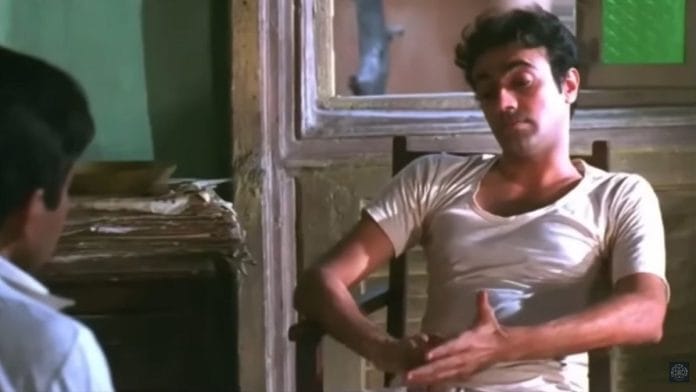Suraj Ka Satvan Ghoda isn’t just a film; it’s an experience—like reading a literary novel, rich in subtext, filled with pauses for reflection, and layered with meaning that gradually unfolds.
Adapting Dharamvir Bharati’s celebrated novel is no small feat, but Shyam Benegal ensures the film retains the book’s literary depth without losing its cinematic appeal.
It’s no surprise that Benegal’s film won the National Film Award for Best Feature Film in Hindi in 1993.
The conscience keeper of Indian cinema, Benegal died on 23 December in Mumbai, just days after celebrating his 90th birthday.
He leaves behind a lasting legacy. From Ankur (1974) to Zubeidaa (2001), his feature films are now considered classics, with Suraj Ka Satvan Ghoda (1992) standing tall among them.
When Shyam Benegal approached Dharamvir Bharati to adapt his acclaimed metafiction into a film, Bharati readily agreed. Addressing concerns from others, Bharati said, “I am entrusting my work to Shyam Benegal and not just any filmmaker. I have implicit faith in him.”
Credit also goes to Shama Zaidi whose powerful screenplay ensures the film never falters in capturing the essence of the novel.
What sets Suraj Ka Satvan Ghoda apart is its layered narrative structure. Its non-linear storytelling blurs the line between fiction and reality, compelling audiences to actively engage with the unfolding drama. Each segment of the story provides a unique perspective on issues such as patriarchy, class divides, and human vulnerability.
The title, derived from Indian mythology, refers to the seven horses that pull the sun’s chariot—the seventh representing hidden truths. This allegory runs throughout the film, inviting viewers to peel back layers to uncover what lies beneath the surface.
Stories of three women
Over several afternoons, Manik (Rajit Kapur) recounts to his friends the stories of three women—Jamuna (Rajeshwari Sachdev), Lily (Pallavi Joshi), and Satti (Neena Gupta)—whom he encountered at different stages of his life. These women not only embody distinct human qualities but also represent different economic strata.
Neena Gupta delivers a stunning performance, channeling a character weighed down by life yet unbroken in spirit. Jamuna, bold and determined, confronts the societal constraints imposed on women, while Pallavi Joshi’s Lily radiates intensity—her dismissal of needing a man is palpable as she negotiates between her desire for freedom and the harsh realities of her circumstances.
Manik is the glue binding these narratives and lives together. Rajit Kapur’s understated performance as the unreliable narrator adds an intriguing layer to the film. The moment he begins to question his own memories, the audience is thrust into the story’s philosophical heart: Is truth ever absolute, or is it shaped by perception and circumstance?
Toward the end, Manik narrates, “Mai kya jiya, mujko jeevan ne jiya. Boond boond kar piya, peekar path par khali pyaale sa chor diya.” This dialogue captures life’s bittersweet essence—the feeling of being a passive participant, consumed by the flow and of existence and left emotionally drained. It mirrors the film’s exploration of unfulfilled love, societal pressures, and the intricacies of human relationships.
Through its non-linear structure, the film portrays characters navigating fleeting joys and deep sorrows, feeling used and discarded by life. The dialogue becomes a haunting reminder of life’s impermanence and the hollow spaces left by unfulfilled desires and broken connections.
Also read: Jeevan Mrityu made Dharmendra-Rakhee hit pair. It was a corruption-revenge saga of the 70s
Music weaved in storytelling
The music of Suraj Ka Satvan Ghoda, composed by Vanraj Bhatia, is a masterpiece that perfectly complements the film’s philosophical and layered narrative. Known for his nuanced work in parallel cinema, Bhatia infuses the soundtrack with subtlety and emotional depth, enriching the storytelling while preserving the film’s introspective tone.
Unlike mainstream Bollywood, where music often exists as a standalone spectacle, Bhatia’s compositions seamlessly blend into the narrative. Songs like Shamein Sab Ki Sab Shamein and Nimiya Ka Ped mirror the inner worlds of Lily and Satti, echoing their struggles and aspirations.
One of the standout aspects of the score is its minimalist approach. The compositions draw heavily from classical Indian influences, gentle instrumentals, and evocative vocals to create an atmosphere of quiet introspection.
In Suraj Ka Satvan Ghoda, the music doesn’t seek attention but invites reflection, perfectly aligning with Benegal’s vision. It exemplifies how thoughtfully integrated music can elevate cinema—leaving an indelible impact without overshadowing the narrative.
Visually, Benegal adopts a minimalistic style that heightens the film’s realism. The rustic settings and muted colour palette ground the story in its socio-cultural milieu. The dialogues, understated yet poignant, often carry layered meanings—encouraging viewers to interpret them through the lens of their own experiences.
Also read: Manoj Kumar’s Purab Aur Paschim set the template for Bollywood’s East vs West showdown
A philosophical journey
Suraj Ka Satvan Ghoda ultimately triumphs because it dares to challenge the conventions of mainstream cinema.
It is a philosophical journey that explores the fragility of memory, the constraints of societal norms, and the enduring human yearning for connection.
Both the novel and the film compel viewers to think about abstract concepts like love, set against the harsh backdrop of poverty and class divides.
Would love have flourished if the characters had been wealthy? How many more Devdases and Tannas—figures bound by duty and societal pressures—must emerge before young men stand up to their fathers to honour their love? Will human beings stand together if freed from the weight of social expectations? Is moral corruption an irreversible path?
These lingering questions cement Suraj Ka Satvan Ghoda as a timeless reflection on the human condition—one that continues to resonate long after the credits roll.
Views are personal.
(Edited by Aamaan Alam Khan)







Are you sure, Ms. Gulati?
When I watched the film, I thought it asked-
“Where are the other six idiots? Am I the only one expected to haul this damned chariot?”